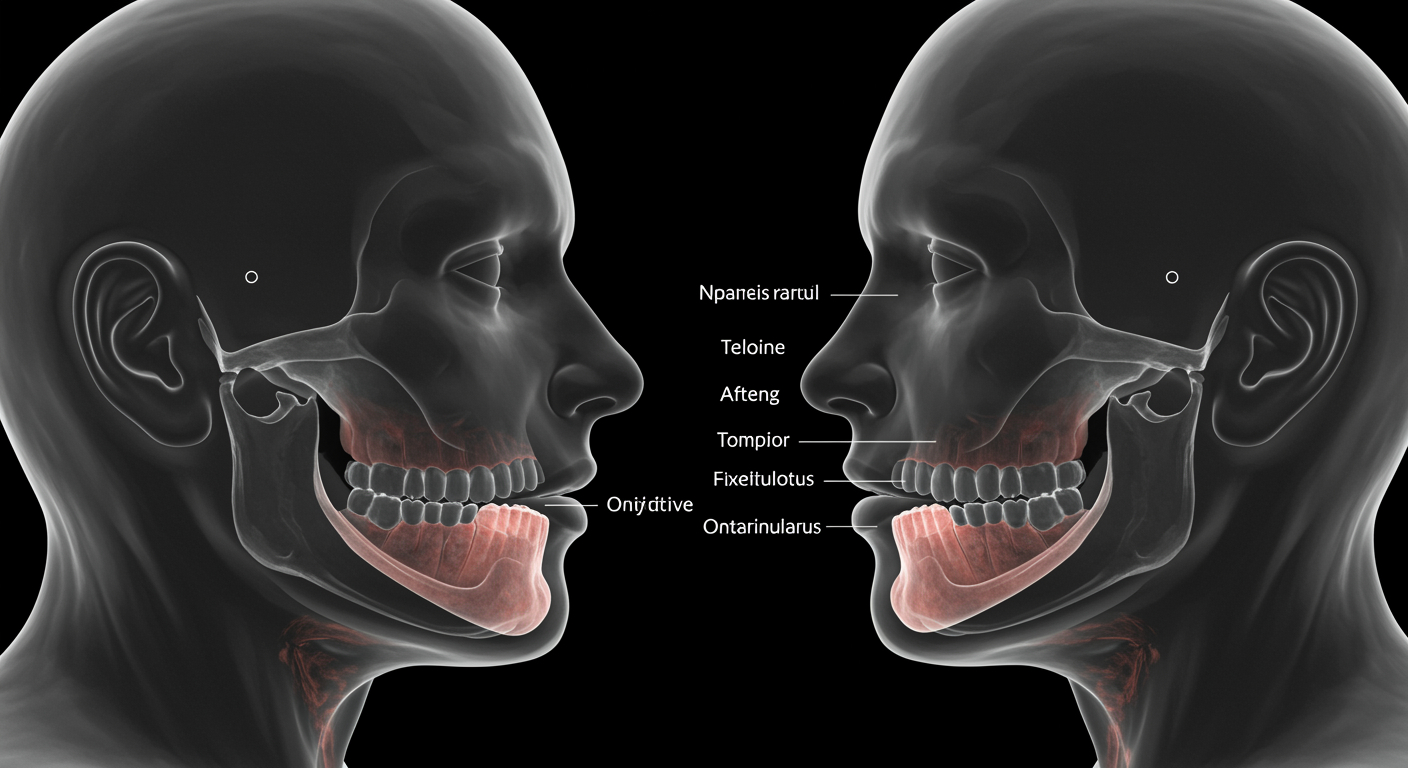Understanding Jaw Surgeries and Their Benefits
Jaw surgery, or orthognathic surgery, corrects jawbone irregularities to improve function, aesthetics, and alleviate pain. Common reasons include misalignments, TMJ disorders, sleep apnea, or injuries.
Types of Jaw Surgeries:
- Orthognathic Surgery: Aligns jaws for better function and appearance. Treats overbites, underbites, and misalignments. Benefits include improved chewing, facial symmetry, and reduced pain.
- TMJ Surgery: Addresses jaw joint issues like chronic pain or restricted movement. Techniques include arthroscopy, arthroplasty, or joint replacement.
- Reconstructive Surgery: Restores jaw structure after trauma or disease using bone grafts or implants. Improves functionality and symmetry.
- Dental Implant-Related Surgery: Prepares the jaw for implants with bone grafting or sinus lifts, ensuring stability and oral health.
Why See a Specialist?
Specialized surgeons tailor treatments to your needs, ensuring safe and effective results. Jaw surgery can restore function, relieve pain, and boost confidence. Consult a professional to explore your options.
Table of Contents
Jaw surgery, also known as orthognathic surgery, is a specialized surgical intervention designed to correct irregularities of the jawbones. These procedures can address functional problems, improve aesthetics, and even alleviate pain caused by misalignments or medical conditions. Whether you’re having trouble chewing, speaking, or breathing, or you’re simply unhappy with your jaw’s appearance, these surgeries can provide a long-term solution.
If you’ve been curious about the types of jaw surgeries available, this article explains what you need to know. Below, we’ll cover the most common procedures, their purposes, and who might need them.
What Is Jaw Surgery and Why Is It Necessary?
The jaws play a crucial role in everyday functions like speaking, eating, and even breathing. However, many people experience issues arising from congenital defects, injuries, or developmental abnormalities that make these functions challenging. Jaw surgery can correct structural problems, reduce chronic pain, and, in some cases, enhance the overall appearance of the face.
Some common reasons for jaw surgery include:
- Severe misalignments that affect the bite or cause TMJ (temporomandibular joint) disorder
- Obstructive sleep apnea, which affects breathing during sleep
- Facial injuries or trauma requiring reconstruction
- Preparation for dental implants when jawbone density or structure isn’t adequate
Once non-surgical methods, like orthodontics or physical therapy, have been ruled out, jaw surgery often becomes the most effective solution.
Below, we explore four primary types of jaw surgeries and their unique purposes.
1. Orthognathic Surgery
What Is Orthognathic Surgery?
Orthognathic surgery is a corrective procedure that aligns the upper or lower jaw—or both—for improved functionality and appearance. It’s often paired with orthodontic treatment, like braces, to ensure optimal results.
Conditions Orthognathic Surgery Treats
- Severe overbite or underbite
- Crossbite or open bite
- Difficulty chewing or speaking
- A disproportionate facial appearance caused by jaw misalignment
How the Procedure Works
The surgeon repositions one or both jawbones using precise incisions and, in some cases, temporary fixation screws or plates. Afterward, the bones are secured in their new positions to heal. This surgery typically requires a recovery period of a few weeks to months, with full results being visible after swelling subsides.
Potential Benefits
- Restores proper alignment for biting and chewing
- Enhances facial symmetry and aesthetics
- Alleviates jaw pain and muscle strain
- Improves airflow in cases of obstructive sleep apnea
2. TMJ Surgery
What Is TMJ Surgery?
TMJ (temporomandibular joint) surgery focuses on correcting issues with the jaw joint and surrounding muscles. The TMJ is the hinge-like joint that allows your jaw to move up, down, and side to side. TMJ problems can lead to chronic pain, difficulty opening or closing the jaw, and clicking or popping sounds.
Conditions TMJ Surgery Addresses
- TMJ disorders (TMD)
- Chronic inflammation in the joint
- Severe joint damage or erosion
- Jaw locking or restricted movement
Types of TMJ Surgery
Depending on the severity, different surgical techniques may be used, including:
- Arthroscopy – A minimally invasive procedure using small instruments to clean or repair the joint.
- Arthroplasty – Open-joint surgery to remove damaged tissue or replace the joint.
- TMJ replacement – For severe, irreversible damage, the joint may be replaced with a prosthetic.
Potential Benefits
- Reduces chronic pain in the jaw and surrounding areas
- Restores jaw mobility and function
- Prevents further joint deterioration
3. Reconstructive Jaw Surgery
What Is Reconstructive Jaw Surgery?
This type of surgery is often performed to restore the jaw after an injury, trauma, or as part of cancer treatment. Reconstructive jaw surgery often requires bone grafting, where bone tissue is transplanted to rebuild the jaw structure.
Conditions Reconstructive Surgery Treats
- Facial injuries like fractures caused by accidents
- Bone loss from tumors, infections, or disease
- Congenital conditions like cleft palate
The Procedure
Reconstructive surgery may involve grafting bone from other parts of your body, like the hip or rib, to fill gaps or rebuild areas of lost bone. Implants might also be used, particularly in cases where natural bone is insufficient for structural support.
Potential Benefits
- Restores functionality after injury or bone loss
- Improves facial structure and symmetry
- Enables normal chewing, speaking, and breathing functions
4. Dental Implant-Related Jaw Surgery
What Is Dental Implant-Related Jaw Surgery?
For patients considering dental implants, the jaw needs to have sufficient bone density and a healthy structure to support the implants securely. If the jawbone is too thin or weak, preparatory surgeries like bone grafting or sinus lifts may be necessary.
Common Types of Preparatory Surgeries
- Bone Grafting – Bone tissue is added to areas lacking density, allowing for future implant placement.
- Sinus Lift Surgery – A procedure that elevates the sinus floor to create space for additional bone in the upper jaw.
Potential Benefits
- Creates a stable foundation for dental implants
- Prevents further bone loss from missing teeth
- Enhances long-term oral health
Why Consulting a Specialist Matters
Jaw surgeries are highly specialized procedures, requiring expertise in both planning and execution. Consulting an oral and maxillofacial surgeon ensures that you receive a comprehensive evaluation tailored to your needs. They’ll factor in your medical history, lifestyle, and goals when determining the best course of treatment.
Surgery isn’t a one-size-fits-all solution, so relying on a professional with advanced training is crucial for achieving safe and effective results.
Final Thoughts
Jaw surgery has come a long way in providing life-enhancing solutions for a wide range of conditions. Whether you’re dealing with a misaligned bite, chronic TMJ pain, or need reconstruction after a traumatic event, there’s likely a surgical option that can improve your quality of life.
If you think jaw surgery might be right for you, take the first step by consulting a specialist. With the right care and expertise, surgery can restore function, alleviate discomfort, and help you feel more confident in your appearance.





